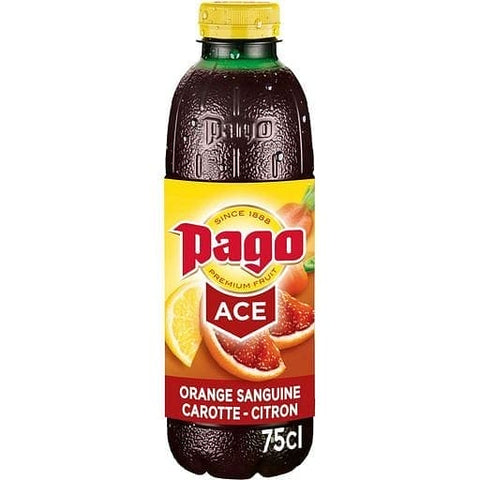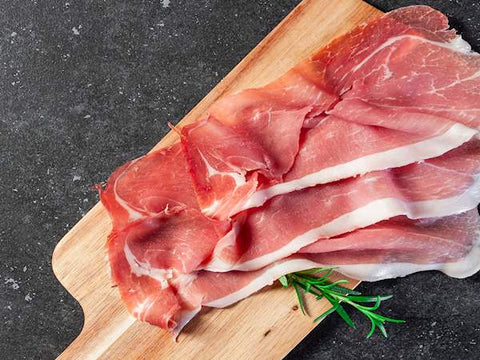Crêpes Suzette is a French dessert made with crêpes, caramelized sugar and butter sauce, orange juice, tangerine or orange-flavored liquor, Grand Marnier, zest, triple sec, or orange Curaçao liqueur is flambéed tableside. The crêpes are folded in half and served in a chafing dish with a warm orange/butter sauce. Although the crêpes are ready to eat, you can top them with vanilla ice cream, raspberries, strawberries, or other fruits. Boozy, zesty, and with a risqué scent, Crêpes Suzette has been described as the most famous of all haute cuisine pancake creations and is without a doubt the queen of retro desserts.
Suzette Crepes are possibly the most famous crepe dish in the world. In a restaurant, a classic Crepe Suzette is frequently prepared in front of the diners in a chafing dish. Warm crepes are served with sugar, orange juice, and liqueur sauce on the side (usually Grand Marnier). The crepes are lit after being soaked in brandy. Fine Parisian restaurants made Suzette crepes popular around the turn of the twentieth century, and they have since become a mainstay of French dessert cuisine. Flour, eggs, butter, and milk are the fundamental ingredients. They are available with a variety of fillings, both sweet and savory.
Sweet and Savory Creps
Wheat flour is used to make sweet crepes, whereas non-wheat flour, such as buckwheat flour, is used to make savory crepes. Cheese, ham and eggs, mushrooms, ratatouille, and other ingredients are commonly found in savory crepes, which are generally eaten for lunch or dinner. The savory filling is traditionally placed in the center of the crepe, with the edges folded halfway over. Breakfast or dessert, sweet crepes are commonly served. Lemon juice, maple syrup, granulated sugar, Nutella spread, jam, fresh fruits, and other sweet toppings can be used to fill or top them. A satisfyingly sweet crêpe, whether cooked with chocolate syrup, maple syrup, or fresh strawberries and crème, is a sinfully wonderful choice.
Origin
The origins and name of the dish are a source of debate. According to one theory, Henri Charpentier, a fourteen-year-old assistant waiter at Monte Carlo's Café de Paris, invented it in 1895. He was making a dessert for the Prince of Wales, who would later become King Edward VII of the United Kingdom, and his guests, including Suzette, a lovely French girl. This narrative was told by Charpentier himself, albeit the Larousse Gastronomique eventually discredited it. Henri Charpentier writes in his book Life A La Henri - Being Henri Charpentier's Memories:
"The cordials caught fire by accident when I was working in front of a chafing dish. I had a strong feeling that I was doomed. The Prince and his colleagues were eagerly anticipating their arrival. What if I had to start all over again? I chewed into it and ate it. It was the most beautiful melody of delicious sensations I'd ever experienced. That is still my stance. That chance encounter with the flame was exactly what was required to unite all of those disparate instruments into one delectable symphony... He ate the pancakes with a fork and then scooped up the remaining syrup with a spoon. He was curious as to the name of the dinner that he had devoured with such zeal. I told him the name was going to be Crepes Princesse. He acknowledged the pancake's gender authority and that this was a compliment directed at him, but he mockingly retorted that there was a lady present. She stood up, kneeling to him, and held her small shirt wide in her palms as she realized what had happened. 'Will you change Crepes Princesse to Crepes Suzette?' His Majesty inquired. So was born and called this delicacy, which, in my opinion, can transform a savage into a sophisticated gentleman, is only one taste. The Prince presented me with a jeweled ring, a panama hat, and a cane the next day."
Alcohol for crêpes Suzette
Curaçao, citrus liquor, was first used to make Suzette crêpes. Curaçao is named after a type of Seville orange that grows on the Caribbean island of Curaçao. Grand Marnier, Cointreau, or brandy is commonly used to generate flavor and flames these days.
Alcohol for flambéing
In theory, you can flambé with any sort of alcohol and any flavor. But if you want it to catch the light and burn, the alcohol concentration should be around 40%, and it should be heated to around 50oC/122°F. If you're flambéing with weaker alcohol, add a little 40 percent proof (flavorless if you don't want the scents to be harmed) to speed things up. As previously noted, Suzette crêpes are generally created with an orange taste.
Flambé in public
While flambéing adds a smokey flavor to the dish, it's more for show. Before lighting the crêpe pan on fire, make sure everyone is gathered around it. Coming out of the kitchen to announce that you've flambéed the crêpes is like announcing that you've uncorked all of the champagne on your own, but there's still some left.
Don’t flambé under the fan
Remember to switch off the fan before flambéing on the stove. The flames would otherwise be drawn into the fan, where they would ignite the accumulated oil. It's also a good idea to tell your curly-haired friends to take a step back. The stench of burning hair isn't exactly pleasant.
Suzette without alcohol
Without alcohol, you can prepare Crêpes Suzette, but you won't be able to flambé them. If you don't flambé them, the charred flavor that makes crêpes so appealing is lost. The majority of the alcohol evaporates during the cooking and flambéing process, but there are lots of alternatives if you don't want alcohol in your dessert, for example, chocolate mousse or crème brûlée.
Decorating crêpes
When serving Suzette's crêpes, flambéing is a must. It is customary in French restaurants for the head chef to conduct it at the table so that no one is left out. It is, however, recommended that you add thin pieces of orange zest to your crêpes at the last minute. They're fantastic with vanilla ice cream. Remove it ahead of time to scoop a soft and delicious dessert dish.

Difference between crepe and pancake
Crepes and pancakes have always been rivals. Crepes are often mistaken for a thin, buttery form of pancakes, but they're much more. These wafer-thin alternatives are available with a range of fillings and toppings, including some that are nutritious, which is why healthy fast food businesses sell crepes.
Pancakes and crepes are equally great for breakfast, dinner, or lunch, with a savory crepe followed by a sweet crepe for dessert. Pancakes can be made savory by cooking them with herbs and aromatics or sweetened by topping them with bananas, chocolate chips, or berries for a sweet treat. Crepes' mild, almost ambiguous flavor allows for a range of fillings, including cheesy, meaty fillings as well as sweet spreads and fruits, depending on your mood. These are the important distinctions:
Pancakes
- Pancakes are smaller and thinner than crepes, which are thicker but not as thin.
- Unlike pancake batter, crepe batter does not contain a rising agent such as baking powder or baking soda.
- Pancakes are American in origin, whereas crepes are French.
- Pancake dough is thick and dense, but crepe batter is thin and runny.
- A crepe has less fat per serving (2.1g), whereas a pancake has more (9.6g).
Reasons Why Crepes are Better than Pancakes on Any Day
-Simple to Make
Crepes with savory fillings are simple to create. The only ingredients you'll need are milk, eggs, butter, flour, and the filling of your choice. You can even master the technique of manufacturing them with enough practice!
-A Savory-Sweet Combination
Crepes are fantastic because they may satisfy sweet and salty cravings. They can be stuffed with everything from Nutella, bananas, berries, and caramelized apples to heartier fare such as wonderful vegetables, eggs and bacon, ham, melted cheese, chicken, and more. Unlike pancakes, which lack the same elasticity, the sight of folded, packed crepes can make your mouth water. Apart from that, savory pancakes don't sound too appealing.
-Is It Possible to Find Pancake Restaurants?
Consider this for a moment: have you ever heard of a pancake restaurant? Crepe-serving restaurants, on the other hand? That is well-liked and well-known. Why? Because restaurants have discovered that crepes can attract guests and are often recognized as a stand-alone, fun, and nutritious meal.
-Enjoy any time
Crepes are versatile enough to be enjoyed at any time of day, not only for breakfast. While pancakes are still considered morning items, crepes have come a long way because of the numerous filling alternatives available. They're becoming more popular as a healthy takeout and quick supper choice. It is the most popular fast food or on-the-go snack not just in France, but also around the world.
-Nutritious and Filling
The phrase itself has a wide range of applications. Because crepes are thinner and softer than pancakes, you can eat as many as you like. They're larger and have more content, so they'll fill you up and satisfy your hunger. Even though the overall nutrition of savory crepes varies depending on the contents, they are considered a healthy choice. They have fewer calories, lipids, carbohydrates, and proteins than pancakes and waffles, for example.
-A More Healthful Fast Food Option
The classic recipe is used to make buckwheat flour crepes, which are healthful and gluten-free. They have fewer calories, fat, and sugar because they are slim. Fill them with Greek yogurt or nut butter if you're looking for a protein-rich snack. This is why these various delicacies are so popular among healthy food enterprises.
-Appeal to a Wide Range of People
For savory crepes, people can choose from a variety of fillings, and the choices are unlimited. They can also be stuffed, folded into a half-moon, arranged in a triangle, used as a pocket, or folded into a half-moon.
-Beneficial to Dieters
You can eat crepes even if you're on a diet because they don't interfere with your daily nutrient intake. By choosing your ingredients, you can customize your meal to meet your specific requirements. It's worth noting that a savory crepe with a diameter of 10 inches has roughly 90 calories without fillings, which is only 4.5 percent of the 2,000-calorie daily minimum.
-Gluten-Free Options Available
If you follow a gluten-free diet, many healthy fast food places now offer gluten-free savory crepes, so you can still have a hearty lunch. Gluten-free buckwheat flour is used in the genuine French version of this meal.
Ingredients
There are around 1¼ cups
⅔ Cup of freshly squeezed orange juice
⅔ Cup sugar
2 tbsp Grand Marnier (or another orange liqueur)
6 tbsp cold unsalted butter, cubed
¼ teaspoon of salt
Create your own Crêpes Suzette
In a saucepan, squeeze the juice of two oranges and add the zest of one orange. 175g butter, 75g caster sugar. Allow to heat until the mixture thickens and becomes syrupy (10-15mins).
Eight Sweet Crêpes should be folded in half and placed in a big pan or flameproof dish. Reheat the crêpes with the orange syrup for 3 minutes over low heat.
Warm 2 or 3 tablespoons Cointreau (Grand Marnier, Curaçao, or any other orange-based liquor on hand would also work nicely) in the syrup pot, then pour over the hot crêpes and flambé them.
Information on nutrition
Nutritional information
- One crepe contains 100 calories, 2.1 grams of fat, 14.4 grams of carbohydrates, and 5.5 grams of protein.
- It also has a lot of minerals (sodium, potassium, calcium, copper, iron, magnesium, selenium, zinc) and vitamins (A, D, C, E, and B vitamins) that are important for body metabolism.
Facts of the original recipe of crêpes Suzette
Auguste Escoffier describes his original recipe for crêpes Suzette in his book "The French culinary art," which differs from what is currently available in several ways.
- Instead of Grand Marnier, curacao orange liqueur was used in the Suzette sauce (as well as the crêpe batter).
- Mandarin was originally preferred to orange (or a combination of orange and lemon), as it is now.
- The sauce is referred to as citrus butter or mandarin butter, and it contains a significant amount of butter.

![Crepes Suzette: Everything You Always Wanted to Know [History, Recipes And Many More]](http://monpanierlatin.co.uk/cdn/shop/articles/crepe-suzette_mpk_03_P1280591_1280x.jpg?v=1647464381)


